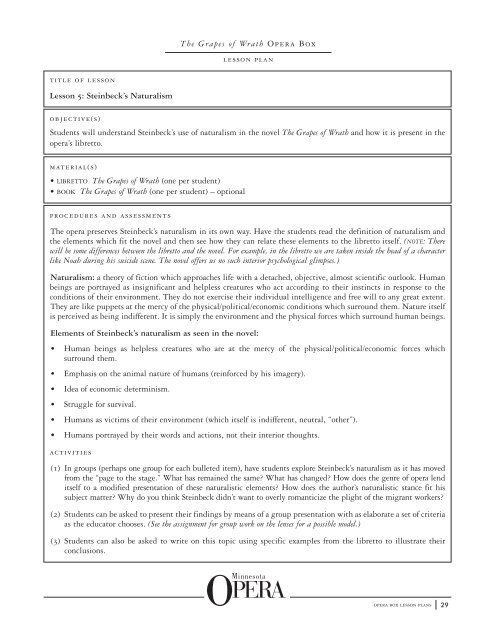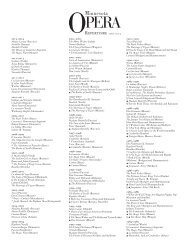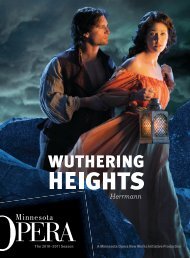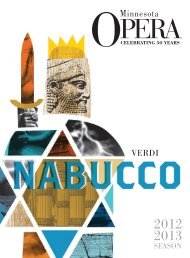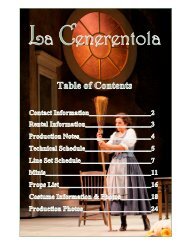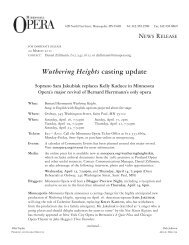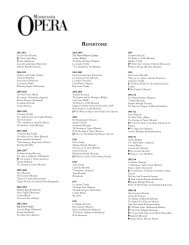Create successful ePaper yourself
Turn your PDF publications into a flip-book with our unique Google optimized e-Paper software.
The <strong>Grapes</strong> of Wrath <strong>Opera</strong> Box<br />
lesson plan<br />
title of lesson<br />
Lesson 5: Steinbeck’s Naturalism<br />
objective(s)<br />
Students will understand Steinbeck’s use of naturalism in the novel The <strong>Grapes</strong> of Wrath and how it is present in the<br />
opera’s libretto.<br />
material(s)<br />
• LIBRETTO The <strong>Grapes</strong> of Wrath (one per student)<br />
• BOOK The <strong>Grapes</strong> of Wrath (one per student) – optional<br />
procedures and assessments<br />
The opera preserves Steinbeck’s naturalism in its own way. Have the students read the definition of naturalism and<br />
the elements which fit the novel and then see how they can relate these elements to the libretto itself. (NOTE: There<br />
will be some differences between the libretto and the novel. For example, in the libretto we are taken inside the head of a character<br />
like Noah during his suicide scene. The novel offers us no such interior psychological glimpses.)<br />
Naturalism: a theory of fiction which approaches life with a detached, objective, almost scientific outlook. Human<br />
beings are portrayed as insignificant and helpless creatures who act according to their instincts in response to the<br />
conditions of their environment. They do not exercise their individual intelligence and free will to any great extent.<br />
They are like puppets at the mercy of the physical/political/economic conditions which surround them. Nature itself<br />
is perceived as being indifferent. It is simply the environment and the physical forces which surround human beings.<br />
Elements of Steinbeck’s naturalism as seen in the novel:<br />
• Human beings as helpless creatures who are at the mercy of the physical/political/economic forces which<br />
surround them.<br />
• Emphasis on the animal nature of humans (reinforced by his imagery).<br />
• Idea of economic determinism.<br />
• Struggle for survival.<br />
• Humans as victims of their environment (which itself is indifferent, neutral, “other”).<br />
• Humans portrayed by their words and actions, not their interior thoughts.<br />
activities<br />
(1) In groups (perhaps one group for each bulleted item), have students explore Steinbeck’s naturalism as it has moved<br />
from the “page to the stage.” What has remained the same? What has changed? How does the genre of opera lend<br />
itself to a modified presentation of these naturalistic elements? How does the author’s naturalistic stance fit his<br />
subject matter? Why do you think Steinbeck didn’t want to overly romanticize the plight of the migrant workers?<br />
(2) Students can be asked to present their findings by means of a group presentation with as elaborate a set of criteria<br />
as the educator chooses. (See the assignment for group work on the lenses for a possible model.)<br />
(3) Students can also be asked to write on this topic using specific examples from the libretto to illustrate their<br />
conclusions.<br />
opera box lesson plans 29


